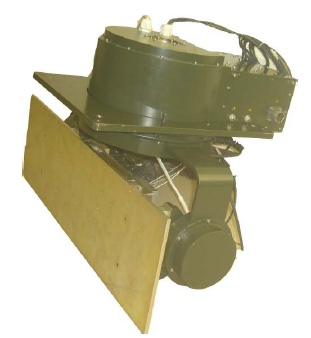
The Antenna Stabilization Unit (ASU) is meant for positioning and stabilizing the payload. The payload consists of RF front end and antenna. In order to maintain the Line of Sight (LOS) of the antenna towards the target, it is necessary to steer the antenna to the required angular position both Azimuth and Elevation against aircraft Yaw and Roll and the developed ASU performs this task. It consists of an Antenna, Antenna Control Unit, and a host Computer. The ASU is TMS based DSP system capable of performing closed loop position control, motor control and monitoring functions and should point the antenna towards the designated area of interest using on-board INS data. The host computer issues mode selection command along with the relevant command data to the ACU.
- Air-borne Radar Pedetals
- Surveillance Systems
- Tracking Systems
- Gimbal
| Parameters | Value |
|---|---|
| Number of Axes | Two axis of rotation (elevation over azimuth orthogonal to each other) |
| Modes of Operation | Strip Map, Spot Mode, Ground Moving Target Indication |
| Maximum Velocity | Azimuth & Elevation 6°/second |
| Minimum Velocity | Azimuth & Elevation 6°/second |
| Position Accuracy of Azimuth & Elevation angles | < 1 milli radian |
| Orthogonality between two axis | < 2 milli radian |
| Host Communication | MIL-1553B & RS-422 for command interface |
| Weight | < 24 Kg |
| Payload Details | Disc Antenna 700x215x10 mm, Weight – 6 Kg. |
| Supply Voltage | 28 V |
| Protection | EMI/EMC, Will Conform to MIL-STD 461E. |
| Power | Peak : < 100 W, Average : <50 W |
| Temperature Range | – 40° C to + 70° C (Storage)- 40° C to + 55° C (Operational)) |
| Thermal Shocks | To withstand – 40° C to + 70° C as a sudden change. |
| High Altitude | 30,000 ft at – 40° C, RH 85% to 95% |
| Limits of Travel | – 50° to + 230° (Azimuth)- 15° to + 67° (Elevation) |
| Maximum & Minimum Speed | 3 RPM & 1 RPM respectively |

